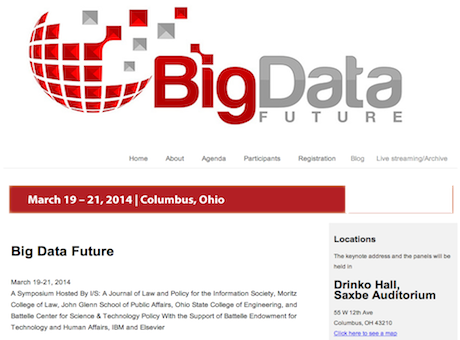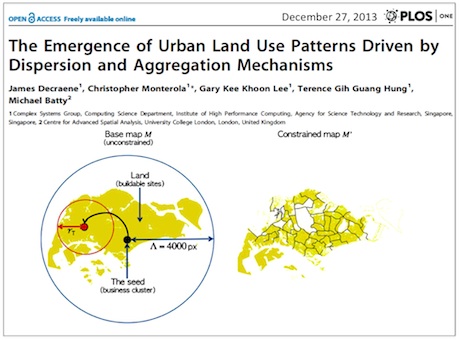The Big Data Future is a conference at Ohio State University 19-21 March 2014 hosted by I/S: A Journal of Law and Policy for the Information Society in the John Glenn School of Public Affairs. It is supported by Battelle, IBM and Elsevier. Some interesting people talking, Harvey Miller from OSU Geography for example who has written a lot about big data and is in the vanguard of the field when it comes to spatial analysis. There is a session on Big Data and Cities and I will be talking there about how our tools in city planning can be informed, enhanced, and even distorted by big data. Here is the link.
Modelling Singapore
In our collaboration with the Complexity Group at Singapore’s Agency for Science, Technology and Research (A*STAR), we are involved in various simulations of development in Singapore. James Decraene, Chris Monterola, Gary Lee, Terence Hung, and myself have built a simple model of urban development based on dispersion and aggregation mechanisms which has similarities to the DLA approach that Paul Longley and myself we used many years ago for simulating cities. In this paper which you can freely download – a triumph for Open Access and good funding – from PLoS One which was published on December 27th 2013, you can find the mechanisms we use and also its application to several other developed cities whose data we can easily download now from various sources. We stand at a threshold where we can now develop many different types of models for many different types of cities because of the techniques such as GIS and scripting languages that we now have and the fact that much data is now open to general usage. This approach whereby we build several models for many places is something that we hope to do this coming year (2014) in CASA where we will explore these possibilities for many UK cities using more aggregate models such as SIMULACRA. We also published a paper on this model in Environment and Planning B this month and you can access it here.
The Smart London Plan
From 2011 to 2021 London’s population will grow by a million – the fastest rate of acceleration ever. We are going to hit nine million before New York, and approach ten million by 2030. With these demographic projections, we will have at least another 641,000 jobs, and another 800,000 homes by 2031. How will London cope with this additional pressure? The Mayor’s Smart London Plan looks at the role digital technology can play in helping to address these challenges, to make London an even better city to live in. Download it here.
Various CASA work is featured by way of the graphics used and this is always of interest to us. In terms of a plan, this is a generic statement of aims and objectives and it must be read with all the other plans and instruments that London is using to grapple with the future city. Andy is on the Smart London board who commissioned this.











